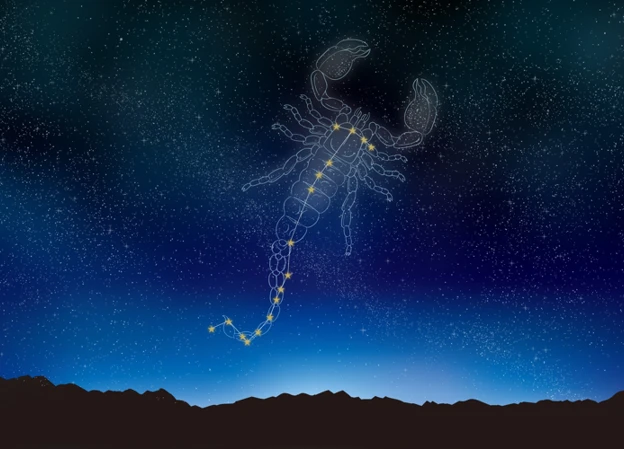Step boldly into the mystical realm of the stars as we embark on a captivating journey to unravel the secrets of the Scorpius constellation. Nestled among the glittering tapestry of the night sky, Scorpius beckons us with its celestial allure and enigmatic history. Prepare to be enraptured by the mythological tale that birthed this fascinating constellation, explore its prominence in ancient cultures, and learn how to locate Scorpius amidst the vast expanse of stars. Delve into the depths of its most prominent stars, from the fiery rival of Mars to the scorpion’s stinger and a mesmerizing binary star system. But the wonders of Scorpius do not end there – traverse the ethereal landscapes of nebulae and clusters that adorn this cosmic masterpiece. Delight in the enigmatic Butterfly Cluster, the captivating Ptolemy Cluster, and the mysterious Cat’s Paw Nebula. Uncover the entangled threads between astronomy and astrology, and marvel at the modern observations and discoveries that continue to deepen our understanding of Scorpius. Prepare to be captivated by the Hunter and the Scorpion, a cosmic dance that has mesmerized humanity for millennia.
Contents
- The Mythological Tale
- Locating Scorpius in the Night Sky
- Prominent Stars in Scorpius
- Nebulae and Clusters in Scorpius
- Exploring the Scorpius Constellation Today
- Conclusion
- Frequently Asked Questions
- References
-
Frequently Asked Questions
- 1. What is the significance of the Scorpius constellation in mythology?
- 2. How can I locate the Scorpius constellation in the night sky?
- 3. What are some other celestial objects within the Scorpius constellation?
- 4. Is Scorpius visible from all latitudes and throughout the year?
- 5. What is the story behind the star Antares in Scorpius?
- 6. Can you observe any nebulas or clusters within Scorpius with the naked eye?
- 7. Is there any connection between Scorpius and astrology?
- 8. How has modern astronomy contributed to our understanding of Scorpius?
- 9. Are there any significant double or binary star systems in Scorpius?
- 10. Can I observe the Scorpius constellation from both the Northern and Southern Hemispheres?
- References
- Read More
The Mythological Tale
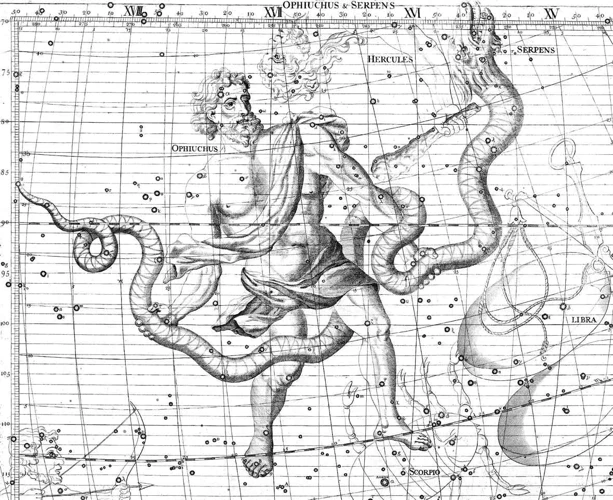
The Mythological Tale
In ancient Greek mythology, the assemblage of stars that form the Scorpius constellation was closely intertwined with the myth of Orion the Hunter. According to one version of the tale, Orion boasted about his hunting prowess, claiming that no creature could defeat him. Infuriated by this arrogance, the Earth’s mother goddess, Gaia, sent a gigantic scorpion to challenge Orion. A fierce battle ensued between the hunter and the scorpion, each inflicting grievous wounds upon the other. Eventually, the scorpion’s poisoned stinger struck Orion, fatally injuring him. But the saga did not end there; Zeus, the king of the gods, placed both the hunter and the scorpion in the night sky as a testament to their valiant struggle. Orion became a prominent constellation in the winter sky, while Scorpius took its place in the summer sky, forever locked in an eternal chase. This legendary clash between the Hunter and the Scorpion embodies the eternal struggle between light and darkness, a theme that resonates throughout various mythologies and cultures around the world.
- Ancient legends often carry deeper symbolism and serve as a reflection of human experiences and beliefs.
- Scorpius and Orion’s celestial battle reflects the ancient Greeks’ idea of hubris and the consequences of excessive pride.
- A similar tale can be found in ancient Egyptian mythology, where the goddess Isis sends a scorpion to kill the reckless sun god, Ra.
The Origin of Scorpius
The Origin of Scorpius
The origins of the Scorpius constellation can be traced back to ancient civilizations that observed and documented the movements of the stars. The Babylonians identified this celestial formation as the representative of the scorpion, with its distinctive shape evoking the image of the arachnid. The ancient Egyptians also recognized Scorpius and associated it with their goddess Serket, who was often depicted with a scorpion on her head. In Greek mythology, Scorpius was said to have been created by the goddess Artemis to punish Orion for his transgressions. In another version of the myth, it was Gaia, the Earth goddess, who sent the scorpion to challenge and ultimately defeat Orion in a battle that resulted in their immortalization in the night sky. Today, Scorpius is one of the 88 recognized constellations, captivating stargazers with its alluring shape and mythological origins. It stands as a testament to the ancient civilizations that found meaning and significance in the celestial wonders above.
- The Babylonians, Egyptians, and Greeks all had their own interpretations and mythologies associated with the Scorpius constellation.
- The scorpion shape of Scorpius is easily recognizable in the night sky, making it a popular constellation for storytelling and identification.
- Scorpius’ representation in different cultures is a testament to the universality of celestial storytelling and its impact on human imagination.
Scorpius in Ancient Cultures
Scorpius in Ancient Cultures
The Scorpius constellation holds significant meaning in numerous ancient cultures around the world. In Babylonian astronomy, Scorpius was associated with the god Nergal, who represented war and pestilence. The Babylonians believed that the appearance of Scorpius in the sky signaled the coming of the summer months, a time of relentless heat and potential hardship. In Egyptian mythology, the constellation was linked to the goddess Serket, who protected the pharaohs during their journey to the afterlife. Serket was often depicted with a scorpion’s tail, emphasizing her connection to Scorpius. In Hindu astrology, Scorpius is known as “Vrishchika,” symbolizing transformation, intensity, and passion. The ancient Mayans also revered Scorpius, associating it with their god of thunder and rain. It is fascinating to note the presence of Scorpius in the zodiac system, where it aligns with the astrological sign of Scorpio. Astrologers believed that those born under this sign possessed qualities such as determination, passion, and a keen sense of loyalty. Across diverse cultures, Scorpius held a place of significance, often symbolizing power, protection, and the cyclical nature of life and death.
- The connection between Scorpius and scorpions as symbols of protection can be seen in ancient talismans and amulets.
- The importance of Scorpius in astrology highlights the cultural significance of this constellation and its influence on human beliefs and interpretations.
- Scorpius’s appearance in different cultural mythologies demonstrates the universality of celestial objects as storytelling devices and cultural symbols.
Locating Scorpius in the Night Sky
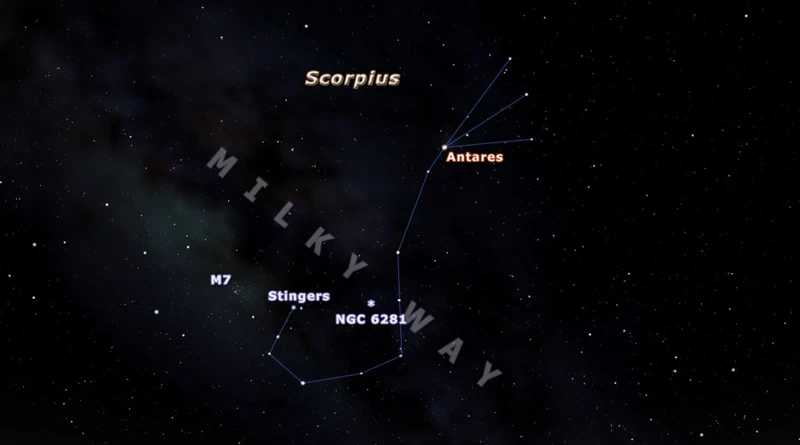
Locating Scorpius in the Night Sky
To embark on a celestial quest to find Scorpius, one must first know where to look in the expansive canvas of studded darkness above. The easiest way to locate Scorpius is by its distinct shape, resembling a scorpion with its curving tail and outstretched pincers. The constellation is best visible during the southern hemisphere’s summer months, and favorable viewing conditions extend to parts of the northern hemisphere during the winter. Determining your latitude is crucial in finding the most optimal viewing window for Scorpius. If you are in the northern hemisphere, look towards the southern horizon, while those in the southern hemisphere can observe Scorpius directly overhead. One key star to look out for is Antares, the brightest star in the constellation, resembling a fiery red jewel. Tracing a line from Antares to the east will lead you to Shaula and Lesath, the scorpion’s venomous stinger. For a unique celestial alignment, Scorpius is often seen interacting with the neighboring constellation of Ophiuchus, the serpent bearer. Keep an eye out for the distinctive characteristic of Ophiuchus intertwining with Scorpius, adding depth and intrigue to this heavenly spectacle. Remember, patience and a keen eye are essential in navigating the vast cosmos to pinpoint the awe-inspiring constellation of Scorpius.
Latitude and Seasonal Visibility
Latitude and Seasonal Visibility
The visibility of the Scorpius constellation varies depending on the viewer’s latitude and the time of year. Due to its position in the southern celestial hemisphere, Scorpius is best viewed from latitudes below 40 degrees north. At latitudes closer to the equator, Scorpius can be observed almost year-round, gracing the night sky with its awe-inspiring presence. However, for observers in higher latitudes, Scorpius may only be visible during the summer months. This is because the inclination of Earth’s axis causes the southern constellations to appear higher in the sky during the summer. The best time to observe Scorpius is during the months of May to August in the Northern Hemisphere, when it reaches its highest point in the night sky. It is during these months that the Hunter and the Scorpion perform their celestial dance, captivating stargazers with their ancient lore and splendor.
- Latitude plays a crucial role in determining which constellations are visible in a particular region.
- The constellations in the Southern Hemisphere, like Scorpius, are more prominent and easier to observe for those closer to the equator.
- For those in higher latitudes, the presence of trees, buildings, and light pollution can affect the visibility of Scorpius and other southern constellations.
- Astrophotographers often travel to locations with lower latitudes and minimal light pollution to capture the full beauty of Scorpius and other southern celestial treasures.
Identifying Key Stars
Identifying Key Stars
Locating the key stars in the Scorpius constellation can be a rewarding endeavor for stargazers and novice astronomers alike. One of the most prominent stars in Scorpius is Antares, also known as the “Rival of Mars.” With its distinct reddish hue, Antares stands out as one of the brightest stars in the night sky. Its name, derived from the Greek words “anti-Ares” meaning “opposite of Mars,” alludes to its striking similarity in appearance to the red planet. Another noteworthy pair of stars within Scorpius is Shaula and Lesath, collectively known as the Scorpion’s Stinger. Shaula, meaning “scorpion” in Arabic, shines with a blue-white brilliance, while Lesath, derived from the Arabic word “alsamak,” meaning “the stinger,” emits a subtle blue glow. Both stars adorn the scorpion’s tail, adding to the celestial spectacle. As you navigate the night sky, keep an eye out for these key stars in Scorpius, which will guide you on your cosmic voyage of discovery.
Other Celestial Objects within Scorpius
Other Celestial Objects within Scorpius
While the Scorpius constellation is known for its striking stars, it is also home to a variety of fascinating celestial objects that captivate astronomers and stargazers alike. One of these objects is the Butterfly Cluster (M6), a stunning open star cluster located near the scorpion’s “head.” Comprised of over a hundred young stars, this cluster resembles a delicate butterfly with its wings outstretched. Another remarkable object within Scorpius is the Ptolemy Cluster (M7), also known as the “Ptolemy’s Shadow.” This open cluster is comprised of approximately 80 stars, with the brightest ones forming a noticeable V shape. Its beauty and proximity to the Milky Way make it a popular target for astrophotographers. Additionally, nestled within Scorpius is the Cat’s Paw Nebula (NGC 6334), a sprawling emission nebula illuminated by young, massive stars. Its name comes from its distinct shape, which resembles the pawprints of a cat. This ethereal nebula offers a glimpse into the breathtaking cosmic creativity that abounds within the Scorpius constellation.
- The Butterfly Cluster (M6) contains several hot, blue stars that give it a luminous appearance.
- The Ptolemy Cluster (M7) received its name owing to the Greek astronomer Ptolemy’s inclusion of it in his celestial catalog.
- The Cat’s Paw Nebula (NGC 6334) is an active star-forming region, characterized by its intricate structures and vibrant colors.
Prominent Stars in Scorpius
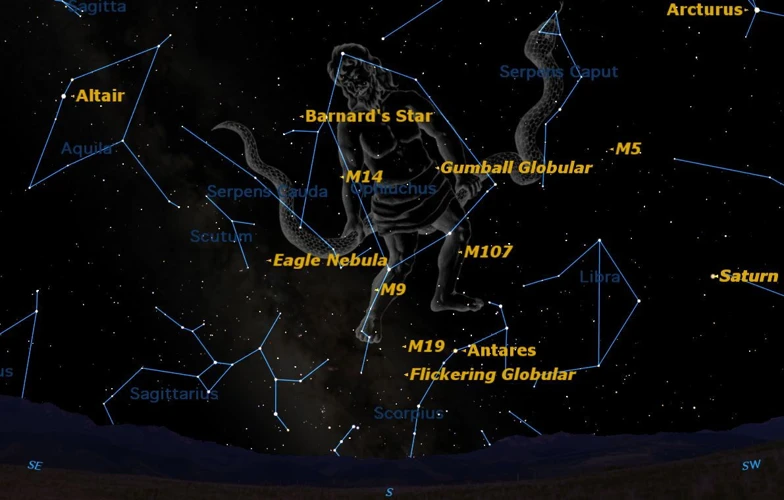
Prominent Stars in Scorpius
Scorpius is adorned with several prominent stars that add to its captivating allure in the night sky. One of the most impressive is Antares, also known as the “Rival of Mars.” This vibrant red supergiant star shines brightly, and its name translates to “the rival of Ares,” the Greek counterpart of Mars. Antares’ distinct fiery hue captivates observers and makes it easily recognizable. Another noteworthy pair of stars in Scorpius are Shaula and Lesath, the scorpion’s stinger. Shaula, also known as Lambda Scorpii, is a blue giant star that radiates a dazzling intensity. Lesath, or Upsilon Scorpii, is a binary star system composed of a blue giant and a blue-white dwarf. Their proximity within the constellation enhances Scorpius’ dramatic appearance and highlights its celestial prowess. Finally, we have Graffias, a fascinating binary star system consisting of four stars. Located in the scorpion’s claw, Graffias captivates observers with its complex dance of celestial bodies. These prominent stars contribute to the intricate tapestry of the Scorpius constellation, guiding our gaze and stirring our imagination as we explore the wonders of the cosmic realm.
Antares: The Rival of Mars
Antares, the brightest star in the Scorpius constellation, holds a significant place in the celestial tapestry. Its name, derived from the Greek term meaning “rival of Mars,” reflects its striking reddish hue and its resemblance to the red planet. With its luminosity and distinctive color, Antares has been a subject of fascination for astronomers and stargazers throughout history. Located at the heart of the Scorpion, this giant star is about 15,000 times more luminous than the Sun and shines with a magnitude of 1.06. Its immense size is approximately 700 times larger than our Sun. Antares belongs to the class of stars known as red supergiants, which are approaching the end of their lives. Although it is often referred to as a rival to Mars due to their similar colors, Antares is actually over 500 light-years away from Earth, much farther than the neighboring Red Planet. Nevertheless, its fiery brilliance and majestic presence in the night sky continue to capture the imagination of astronomers and inspire wonder in all who gaze upon it.
- Antares’ red coloration is caused by its low surface temperature and the presence of abundant elements like carbon and oxygen.
- The star’s distance from Earth makes it impossible to distinguish its size and color with the naked eye alone; telescopes are necessary to appreciate its true magnificence.
- Antares’ position in the celestial sphere has made it a navigational reference point for ancient seafarers.
Shaula and Lesath: The Scorpion’s Stinger
Shaula and Lesath: The Scorpion’s Stinger
Nestled within the enigmatic Scorpius constellation, two prominent stars stand out as the scorpion’s lethal stinger – Shaula and Lesath. These celestial gems, also known as Lambda Scorpii and Upsilon Scorpii respectively, have captured the imagination of astronomers and stargazers throughout history. Shaula, originating from the Arabic word for “the raised tail,” shines as a blue giant, approximately 700 light-years away from Earth. Its intense brilliance illuminates the constellation, leaving a lasting impression on those who behold it. Lesath, deriving its name from Arabic, meaning “the sting,” complements its companion with its distinct bluish-white glow. Located approximately 600 light-years away, Lesath adds another layer of mystique to the constellation. Together, these twin stars symbolize the potent, venomous weapon of the mythical scorpion. As we gaze upon Shaula and Lesath, we are reminded of the immense power and beauty that the cosmos holds, and the timeless stories that have accompanied these celestial wonders throughout the ages.
Graffias: A Binary Star System in Scorpius
Graffias: A Binary Star System in Scorpius
Among the brilliant stars that adorn the celestial expanse of Scorpius, one captivating gem stands out – Graffias, a captivating binary star system. Located approximately 530 light-years away from Earth, Graffias consists of two stars in orbit around their common center of mass. The primary star, Graffias A, shines with a luminosity over 4,000 times that of our Sun, while the secondary star, Graffias B, is slightly dimmer but still radiates with a brilliance that captivates astronomers and stargazers alike.
Graffias holds another intriguing feature – it belongs to a class of stars known as spectroscopic binaries. This means that the orbital motions of the two stars are so closely intertwined that they cannot be resolved as separate objects by telescopes. Instead, their existence is inferred through the analysis of their combined spectra, which reveals subtle shifts in wavelengths as the stars move towards or away from Earth.
Further adding to the allure of Graffias is its distinctive name. Derived from the Arabic word for “the claws,” this name highlights the scorpion’s nature and its association with the constellation Scorpius. The name Graffias captures the essence of the celestial dance between Orion the Hunter and the Scorpion as they continue their eternal chase across the celestial sphere.
While Graffias may not be as well-known as some of the other prominent stars in Scorpius, its unique characteristics and captivating celestial dance make it a captivating subject for both professional astronomers and amateur stargazers. Its presence in the night sky serves as a beautiful reminder of the vast wonders that await those who venture into the cosmic depths of the Scorpius constellation.
Nebulae and Clusters in Scorpius

Nebulae and Clusters in Scorpius
Within the enigmatic embrace of the Scorpius constellation, lie a myriad of celestial wonders, ranging from mesmerizing nebulae to captivating clusters. One such marvel is the Butterfly Cluster (M6), a dazzling open star cluster situated approximately 1,600 light-years away from Earth. Aptly named for its resemblance to a fluttering butterfly, this cluster is a breathtaking sight through a telescope, with its brilliant stars twinkling against a backdrop of nebulous gas and dust. Nearby, we find the Ptolemy Cluster (M7), a striking collection of over 80 suns, making it one of the most prominent open star clusters in the night sky. Its charismatic allure has captured the imaginations of astronomers and stargazers for centuries. Further in our exploration, we encounter the Cat’s Paw Nebula (NGC 6334), a celestial masterpiece characterized by its intricate filaments of interstellar dust and gas. This cosmic menagerie of clusters and nebulae within Scorpius offers a glimpse into the vast tapestry of the universe, a testament to the beauty and majesty that resides beyond our terrestrial confines.
- The Butterfly Cluster (M6) is also known as the “Ptolemy Cluster” due to a misinterpretation of historical records.
- These celestial objects serve as a nursery for the birth of new stars and the creation of planets.
- Observations of nebulae and clusters provide valuable insights into the process of stellar evolution.
The Butterfly Cluster (M6)
The Butterfly Cluster (M6)
Nestled within the Scorpius constellation lies the captivating Butterfly Cluster, also known as Messier 6 or M6. This open star cluster is a breathtaking sight to behold, comprising of dozens of young, hot stars enveloped in a celestial haze. M6 gets its name from its distinct shape, which resembles the delicate wings of a butterfly. The cluster is located approximately 1,600 light-years away from Earth, making it a prominent feature in the night sky. The stars within the Butterfly Cluster are relatively young, with an estimated age of around 100 million years. They formed from the same molecular cloud and are held together by gravitational forces, creating a stunning celestial tapestry of twinkling lights. Observing M6 through a telescope reveals a mesmerizing display of celestial diversity, with stars of varying brightness and colors scattered across the cluster. Many stargazers and astronomers find the Butterfly Cluster to be a remarkable object of study, as it provides valuable insights into the formation and evolution of stars within our galaxy. So, on a clear summer night, cast your gaze towards Scorpius and let the enchanting beauty of the Butterfly Cluster leave you in awe of the wonders of the universe.
- The Butterfly Cluster contains more than 80 stars, with the brightest ones illuminating the cluster.
- Although visible to the naked eye, a telescope or binoculars enhance the intricate details of the cluster.
- M6 is often a popular target for astrophotography enthusiasts, capturing its ethereal beauty in stunning images.
The Ptolemy Cluster (M7)
The Ptolemy Cluster (M7)
The Ptolemy Cluster, also known as Messier 7 or M7, is a stunning open star cluster located within the boundaries of the Scorpius constellation. This celestial gem is easily visible to the naked eye and has been captivating stargazers for centuries. Spanning approximately 25 light-years and situated around 980 light-years away from Earth, the Ptolemy Cluster is a dazzling congregation of over 80 stars. Its prominent position near the scorpion’s stinger makes it an easily identifiable landmark in the night sky. Named after the renowned Greco-Egyptian astronomer Claudius Ptolemy, this cluster has been a subject of fascination since ancient times. Its beauty and intricacy have inspired countless astronomers and stargazers throughout history, and it continues to be a popular target for astrophotography. The Ptolemy Cluster’s proximity to the larger constellation of Scorpius adds to its celestial allure. Its stars, which span a range of colors from blue to yellow, create a mesmerizing tapestry against the backdrop of the cosmic landscape. Whether observed through a telescope or admired with the naked eye, the Ptolemy Cluster is a breathtaking testament to the wonders of the universe and a celestial jewel within the Scorpius constellation.
- The Ptolemy Cluster is part of Messier’s catalog of astronomical objects, which includes various astronomical phenomena such as galaxies, nebulae, and star clusters.
- Located just above the scorpion’s stinger, the Ptolemy Cluster adds to the visual allure of the Scorpius constellation, making it a must-see for stargazers and astronomers alike.
- With its multitude of stars and intricate patterns, the Ptolemy Cluster offers a captivating view for those exploring the wonders of the night sky.
The Cat’s Paw Nebula (NGC 6334)
The Cat’s Paw Nebula (NGC 6334)
Among the many celestial wonders found within the Scorpius constellation, the Cat’s Paw Nebula stands out as a captivating sight that ignites the imagination. Located approximately 5,500 light-years away from Earth, this emission nebula gets its peculiar name from the intricate pattern of dark dust lanes and bright clusters of gas that resemble the pads and toes of a feline’s paw. The Cat’s Paw Nebula stretches across a vast expanse of space, spanning about 50 light-years in diameter. Its vibrant hues of red, pink, and blue are a result of intense radiation emitted by young, massive stars lurking within its midst. This stellar nursery is a hotbed of activity, with energetic star formation processes sculpting the surrounding gas and dust. The Cat’s Paw Nebula serves as a reminder of the ongoing cycle of stellar birth and death in our ever-expanding universe. Its beauty and complexity make it a favored target for astrophotographers and astronomers alike, offering a vivid glimpse into the mesmerizing wonders that the cosmos has to offer.
- NGC 6334 is considered an active star-forming region, similar to the famous Orion Nebula.
- Its distance from Earth makes it challenging to study in detail, but advanced telescopes and imaging techniques have revealed its intricate features.
- The Cat’s Paw Nebula is part of a larger complex of nebulae, known as the Scorpius OB1 association, which includes other notable features such as the War and Peace Nebula and the Omega Nebula.
Exploring the Scorpius Constellation Today
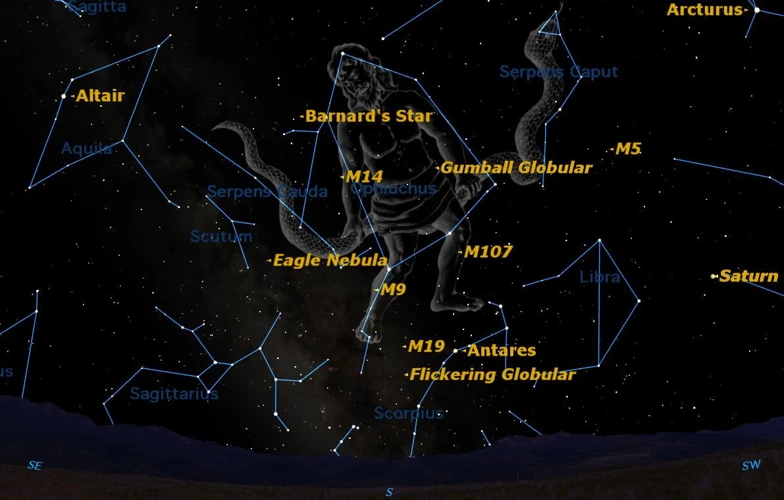
Exploring the Scorpius Constellation Today
In the modern era, the Scorpius constellation continues to captivate stargazers and astronomers alike. Its distinct shape and prominent stars make it easily recognizable in the night sky. The connection between astronomy and astrology is often explored when examining Scorpius, as it is one of the twelve zodiac constellations. In astrology, Scorpius is associated with intensity, passion, and transformation, reflecting the scorpion’s powerful symbolism.
Observing Scorpius requires an understanding of its celestial coordinates and seasonal visibility. The constellation is most prominently visible in the Southern Hemisphere, but it can also be seen in parts of the Northern Hemisphere during certain times of the year. The best time to observe Scorpius in the Northern Hemisphere is during the summer months. To locate Scorpius, one can look for the bright red star Antares, often referred to as the “heart” of the scorpion. Its distinct reddish hue sets it apart from other stars in the night sky. Additionally, the stinger of the scorpion formed by the stars Shaula and Lesath can serve as a guide when identifying Scorpius.
Exploring the Scorpius constellation today extends beyond visual observation. Scientists and astronomers employ advanced telescopes and technology to uncover hidden celestial objects within Scorpius. The discovery of galaxies, nebulae, and star clusters within this constellation has deepened our understanding of the universe. These celestial objects include the Butterfly Cluster (M6), characterized by its formation of young stars surrounded by nebulous gas and dust. The Ptolemy Cluster (M7), a cluster of stars located near the tail of Scorpius, showcases the beauty of interstellar clusters. Another fascinating nebula is the Cat’s Paw Nebula (NGC 6334), named for its distinctive shape resembling a feline paw. These remarkable objects within Scorpius offer endless opportunities for scientific exploration and astronomical research.
As technology advances and our understanding of the universe expands, the exploration of the Scorpius constellation continues to unveil fascinating revelations. Whether studying its celestial coordinates, observing its prominent stars, or venturing into the realms of nebulae and clusters, Scorpius remains a captivating constellation that symbolizes both ancient mythological tales and the awe-inspiring wonders of the cosmos.
- The zodiac constellations play a significant role in astrology and the interpretation of personal horoscopes.
- Antares, the brightest star in Scorpius, derives its name from the Greek words meaning “anti-Mars,” referring to its reddish color similar to the planet Mars.
- The Butterfly Cluster (M6) is located approximately 1,600 light-years away from Earth and is home to hundreds of young stars.
- Studying star clusters gives scientists insights into the formation and evolution of stars within a certain region of the galaxy.
Astronomy and Astrology Connections
Astronomy and Astrology Connections
Throughout history, the stars have fascinated both astronomers and astrologers alike, each seeking to understand their mysteries from different perspectives. In the case of the Scorpius constellation, its celestial prominence has made it a significant figure in both fields of study. Astronomers observe and analyze the stars and celestial objects within Scorpius to deepen our understanding of the universe. They study the properties of stars like Antares, Shaula, Lesath, and Graffias in order to unravel their physical characteristics, distances, and evolutionary stages. The rich presence of nebulae and clusters, such as the Butterfly Cluster, the Ptolemy Cluster, and the Cat’s Paw Nebula, offer valuable insights into star formation and the interstellar medium. Meanwhile, astrologers interpret the constellation in the context of astrology, a practice rooted in ancient beliefs about the influence of celestial bodies on human lives. They associate Scorpius with traits such as passion, intensity, transformation, and protection. Individuals born under this zodiac sign, which spans from October 23rd to November 21st, are believed to embody these characteristics in their personality. It is important to note that while astronomy relies on scientific observation and analysis, astrology is considered a pseudoscience that lacks empirical evidence. However, the historical connections between Scorpius and astrological interpretations continue to fascinate and intrigue those interested in the intersection between the cosmos and human existence.
- Astrology and astronomy have coexisted throughout history, with shared roots but different approaches to understanding the night sky.
- The celestial objects within Scorpius, such as stars and nebulae, offer valuable data for astronomers to study stellar evolution.
- Astrologers interpret the zodiac signs, including Scorpius, to provide insights into personality traits and life trajectories based on birth dates.
- Scorpius is associated with the element of water, representing emotional depth and transformation.
Modern Observations and Discoveries
Modern Observations and Discoveries
In modern times, astronomers continue to study and make fascinating discoveries related to the Scorpius constellation. Technological advancements have allowed for a deeper understanding of its celestial objects and their properties. One remarkable observation is the presence of numerous exoplanets within Scorpius. These distant worlds orbiting other stars hold the potential for providing insight into the existence of extraterrestrial life. One such exoplanet, known as HD 147506b, is located within the constellation and has been extensively studied. Its large size and close proximity to its host star have sparked scientific curiosity, as it challenges existing theories of planetary formation. Additionally, astronomers have identified other interesting phenomena within Scorpius, such as gamma-ray bursts. These powerful explosions of energy originate from distant galaxies and are believed to be associated with the supernova and hypernova events. The ability to detect such occurrences aids researchers in unraveling the mysteries of cosmic evolution and the lifecycle of stars. As technology advances, astronomers will undoubtedly continue to uncover new and exciting phenomena within Scorpius, shedding light on the wonders of our vast universe.
Conclusion

Conclusion
The Hunter and the Scorpion, the mesmerizing tale that gave birth to the Scorpius constellation, continues to inspire and captivate us. From ancient mythologies to modern observations, Scorpius has left an indelible mark on human culture and our understanding of the cosmos. Its prominence in various ancient cultures reveals the universality of our fascination with the heavens above. As we gaze upon the celestial depths, we cannot help but be drawn into the eternal dance between light and darkness, embodied by Orion and Scorpius. The stars of Scorpius have guided us through the ages, serving as navigational beacons and inspiring stories of courage, hubris, and the fragile yet resilient human spirit. So, next time you find yourself gazing at the night sky, let the allure of Scorpius transport you into a realm of wonder and discovery – a testament to the infinite mysteries that await us in the vast expanse of the cosmos.
- Scorpius remains a prominent constellation in modern astrology, with its influence believed to impact various aspects of human life.
- Explorations and observations of Scorpius continue to shed light on the formation and evolution of stars and nebulae.
- The stories and legends associated with Scorpius serve as a reminder of our timeless connection to the universe and the wonders it holds.
Frequently Asked Questions

FAQs about the Scorpius Constellation
1. What is the significance of the Scorpius constellation? The Scorpius constellation holds tremendous cultural and mythological significance, representing the eternal struggle between light and darkness. It serves as a celestial testament to the clash between the fearless hunter Orion and the mighty scorpion.
2. How can I locate Scorpius in the night sky? To locate Scorpius, you need to identify key stars such as Antares, Shaula, and Lesath. Look for a distinct “fishhook” shape formed by the brightest stars in the constellation.
3. What are some notable stars in Scorpius? Antares, known as the rival of Mars, is one of the brightest stars in Scorpius. Shaula and Lesath, the scorpion’s stinger, also stand out prominently in the constellation.
4. Are there any interesting celestial objects within Scorpius? Yes, Scorpius is home to several intriguing celestial objects. The Butterfly Cluster (M6), the Ptolemy Cluster (M7), and the Cat’s Paw Nebula (NGC 6334) are among the notable clusters and nebulae found in Scorpius.
5. Are there any connections between Scorpius and astrology? Yes, in astrology, Scorpio is associated with intensity, transformation, and deep emotions. It is regarded as one of the zodiac signs and holds significance in astrological interpretations.
6. Can Scorpius be seen from all latitudes? Scorpius is most visible from latitudes between +40° and -90°. However, its visibility and prominence in the night sky depend on the time of year and how far south or north you are.
7. Is there any connection between the Scorpius and Ophiuchus constellations? While Scorpius and Ophiuchus are neighboring constellations, they have distinct mythological origins and narratives. However, they are often mentioned together due to their proximity in the night sky.
8. What is the mythology behind Scorpius in ancient cultures? Scorpius holds significance in various ancient cultures, symbolizing different things. In Egyptian mythology, it represents a scorpion sent to kill the sun god Ra, while in ancient Mesopotamia, it was tied to the tale of Gilgamesh and the Bull of Heaven.
9. What is the scientific significance of studying Scorpius? Studying Scorpius allows astronomers to gain insights into stellar evolution, the formation of star clusters, and the dynamics of nebulae. It helps deepen our understanding of the universe and its celestial objects.
10. Can I observe Scorpius with a basic telescope? Yes, Scorpius can be observed with a basic telescope, allowing you to explore its stars, clusters, and nebulae in more detail. A telescope will enhance your viewing experience and allow you to appreciate the intricate beauty of this captivating constellation.
References
- Scorpius the Scorpion is a summertime delight
- The constellation Scorpius : the story of the scorpion (Book)
Frequently Asked Questions

1. What is the significance of the Scorpius constellation in mythology?
The Scorpius constellation holds great cultural and mythological significance. It has been associated with various stories and legends throughout history, representing themes of betrayal, vengeance, and transformation.
2. How can I locate the Scorpius constellation in the night sky?
To locate the Scorpius constellation, you need to find its key stars, such as Antares and Shaula. These stars form distinctive patterns that resemble an inverted “J” or a scorpion’s shape. Depending on your location and the time of year, you can easily spot Scorpius in the southern sky during summer evenings.
3. What are some other celestial objects within the Scorpius constellation?
In addition to its prominent stars, Scorpius is also home to several fascinating celestial objects. These include the Butterfly Cluster (M6), the Ptolemy Cluster (M7), and the Cat’s Paw Nebula (NGC 6334). These objects contribute to the constellation’s stunning visual appeal.
4. Is Scorpius visible from all latitudes and throughout the year?
Scorpius is best seen from latitudes below 40 degrees north. It is more readily visible in the Southern Hemisphere, where it remains visible for a longer duration during the year compared to the Northern Hemisphere. In the Northern Hemisphere, Scorpius is low on the horizon and can disappear during certain seasons.
5. What is the story behind the star Antares in Scorpius?
Antares, also known as the “Rival of Mars,” is a prominent star in the Scorpius constellation. It derives its name from the Greek word meaning “anti-Ares” (opposing Mars) due to its striking reddish color. The star has captivated astronomers and sky gazers for centuries.
6. Can you observe any nebulas or clusters within Scorpius with the naked eye?
While some nebulas and clusters in Scorpius are visible without any optical aid, many require binoculars or telescopes to appreciate their intricate details. However, even without assistance, the Scorpius constellation offers a truly breathtaking view due to its bright stars and distinct shape.
7. Is there any connection between Scorpius and astrology?
Scorpius has a strong connection to astrology. It is associated with the zodiac sign Scorpio, which is believed to influence people born between October 23rd and November 21st. As with other zodiac signs, Scorpio is believed to have certain personality traits influenced by the characteristics of the Scorpius constellation.
8. How has modern astronomy contributed to our understanding of Scorpius?
Modern astronomy has allowed us to explore and study Scorpius in great detail. Through advanced telescopes and space probes, scientists have discovered new stars, exoplanets, and nebulae within the constellation. These findings have expanded our knowledge of the universe and deepened our appreciation for this captivating celestial region.
9. Are there any significant double or binary star systems in Scorpius?
Yes, one notable double or binary star system in Scorpius is Graffias. It consists of two stars orbiting each other, creating a mesmerizing visual effect. Graffias is located near the “stinger” of the Scorpius constellation, adding to its enchanting allure.
10. Can I observe the Scorpius constellation from both the Northern and Southern Hemispheres?
While Scorpius is primarily visible from the Southern Hemisphere, it can still be observed from the Northern Hemisphere, albeit with some difficulty. Due to its location near the celestial equator, the Northern Hemisphere can catch a glimpse of Scorpius on low-horizon nights during the summer season.
References
- The constellation Scorpius : the story of the scorpion (Book)
- Scorpius the Scorpion is a summertime delight

